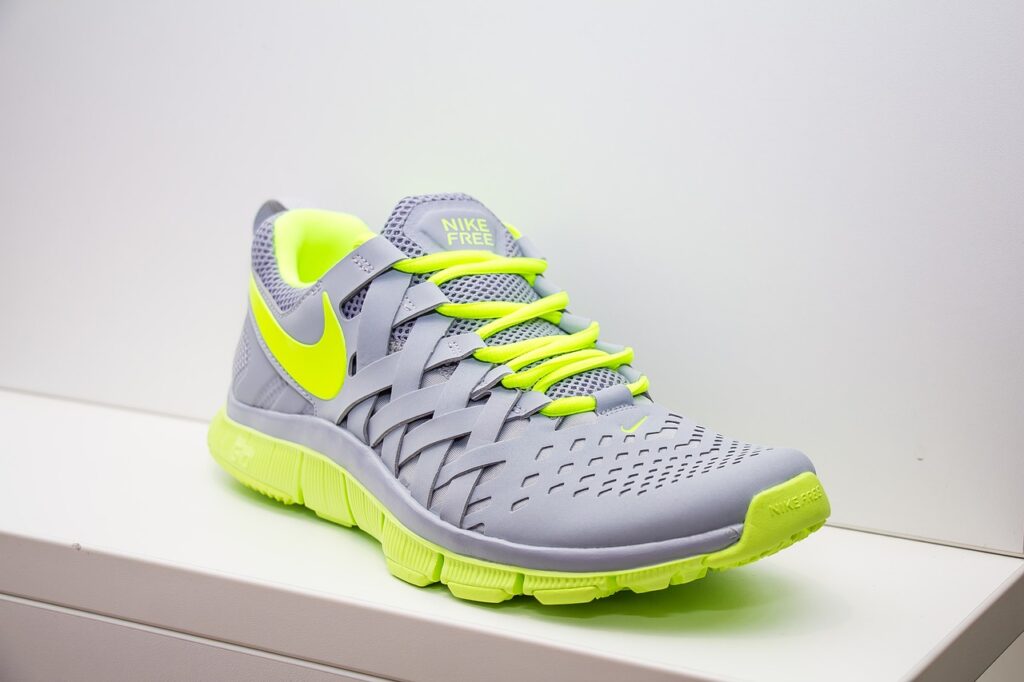When you walk into a shoe store, most salespeople have little concept of what the activity requires, so poor advice is frequently given. This results in a shoe that either reduces your performance, increases your risk of injury (particularly if you wear a running shoe), or shortens the life of your shoe.
What type of shoes are good for volleyball? For volleyball, you should use shoes with a gum-rubber sole, volleyball eyelets for lacing, appropriate ankle support, and adequate cushioning. While volleyball-specific shoes are usually suggested, some basketball shoes can provide the traction you need to improve your volleyball play.
Everyone has various volleyball preferences and positions, so selecting the proper one can make a significant impact. When you’re just starting, a general grasp will typically suffice to give you an idea of what to look for, so I’ll go over some of the top brands to consider and what qualities are essential in a volleyball shoe.
4 Must-Have Features In A Volleyball Shoe
All volleyball shoes must have these features:
- Gum-rubber sole
- Volleyball eyelets
- Ankle support
- Cushioning
1. Gum Rubber Soles
Gum rubber soles are non-marking soles composed of a unique type of rubber that are specifically developed to promote traction and grip on a volleyball court. Without these, your shoes would slide on the court, and you may lose your footing and sustain harm.
Lightweight and functional, this is the most crucial feature to seek in volleyball shoes; without it, they cannot be considered volleyball shoes. If your volleyball shoes are slipping on the court, refer to my post on how to fix them.
2. Volleyball Eyelets
The holes through which your shoelaces are threaded on your shoes are known as eyelets and they are positioned somewhat behind the shoe’s tongue. Threading the laces through here helps the player sit back in their shoe more comfortably and firmly, minimizing wiggle room and conforming the shoe to the player’s feet.
This is significant for fast motions and how dynamic movement can cause the foot to roll about within the shoe when under duress or changing directions quickly. These eyelets help to prevent it.
3. Ankle Support
Ankle support is crucial, and it takes the form of sturdy shoe sides that cushion the ankle if it starts to roll, as well as suitable shoe shaping to hold your foot.
Certain shoes excel at this and are created with injury prevention in mind but others can adopt a more minimalist approach to remain lightweight. Look at the shoe’s name and basic description to see if it is a primary or secondary factor; not all shoes are the same. Select the level of safety that you are most comfortable with.
Even if your shoe does not have high sides, you can improve your ankle safety by purchasing an ankle brace to fit inside your shoe with your foot. When combined with proper ankle-supporting shoes, this is the most effective strategy to avoid ankle injuries, which are the most common in volleyball.
4. Cushioning
Last, but not least, volleyball shoes require padding. This is especially critical for a leaping-based sport like volleyball, as jumping repeatedly on hardwood surfaces can cause your feet to ache, bruise, or blister without the proper padding.
Cushioning includes an invisible system within the shoe that compresses material or, in certain cases, gel-based substances to cushion the foot, the fabric within the shoe on which your foot rests, and, finally, the gum-rubber sole, which serves multiple purposes.
Beginner vs. Advanced Volleyball Shoes: What to Look For?
Depending on how serious you take the sport and how frequently you play, you may want to explore your shoe options more carefully.
Here’s a quick comparison of what beginners should look for vs. advanced players.
Beginner Volleyball Shoes
For novices, any shoe labeled “volleyball shoe” would suffice. When you’re just getting started, it makes little sense to specialize in specific features. If you already have basketball shoes, you can use them while you decide which features you prefer, but avoid running shoes.
To avoid injury, you should wear a shoe with a solid grip and ankle support. Asics is a wonderful brand to invest in for your first volleyball shoes because they are less expensive and can work for any player. That doesn’t imply they’re awful shoes; my entire family is wearing Asics for the upcoming season.
Playing in cheaper or less specified shoes will help you identify flaws in them, which is a positive thing. Knowing what you enjoy and dislike, as well as what you need more of, can help you decide how to buy shoes for volley ball.
To be honest, what will make you a better volleyball player as a novice is not your choice of shoe but rather improving your technique, footwork, and position.
Advanced Volleyball Shoes
When you become a more skilled volleyball player, you must understand your position and choose the shoe that best fits your needs. Spikers need cushioning, passers need grip, and both require ankle support.
Setters are in an unusual situation in which there is no defining rule to help: they are a force of nature with quick-firing nerves, and no two playing styles are alike. As a result, a shoe with a wider range of applications is ideal.
Most Popular Volleyball Shoe Brands
The four most popular volleyball shoe brands are listed below, but they may not be the only ones you choose. Off-brand volleyball shoes are less expensive, but they put you in danger of injury and do not provide the same level of performance. Stick with tried-and-true methods; if they work for the pros, they will work for you as well.
1. Mizuno
Mizuno is the world’s best volleyball brand, particularly in volleyball shoes. Their products are constantly high-quality and are used by professionals all over the world, with some of the most extensive and complex in-shoe systems available to help every athlete perform to their full potential. Mizuno products can be pretty pricey, so be prepared to pay a little cash if you’re committed to them.
2. Asics

Although Asics may appear to be a cheaper alternative at first glance, they are nonetheless really well-made and dependable sneakers.
They are lightweight and reliable, with a focus on strong grip and a low price. These are excellent first volleyball shoes for beginners, as well as a dependable staple for seasoned players.
3. Adidas

These shoes are more of a court shoe than a proper volleyball design, similar to Nike but less expensive than Asics. They are slightly bigger and heavier than the Mizuno or Asics choices, but they provide a sturdy foundation and adequate ankle support.
Adidas has historically had better success with women’s volleyball shoes than men’s, but they are still worth looking into. There aren’t many disadvantages, but neither are there many advantages: a solid first pick for this type of shoe, and less expensive than Nike for a multi-sport shoe.
Final Thoughts
If you want to read detailed reviews of volleyball shoes, go to my article on the 8 Best Volleyball Shoes, where I’m confident you’ll discover a perfect pair for your level and position.
When looking for volleyball shoes, consider ones with a gum-rubber sole, volleyball eyelets for lacing, strong ankle support and adequate cushioning




